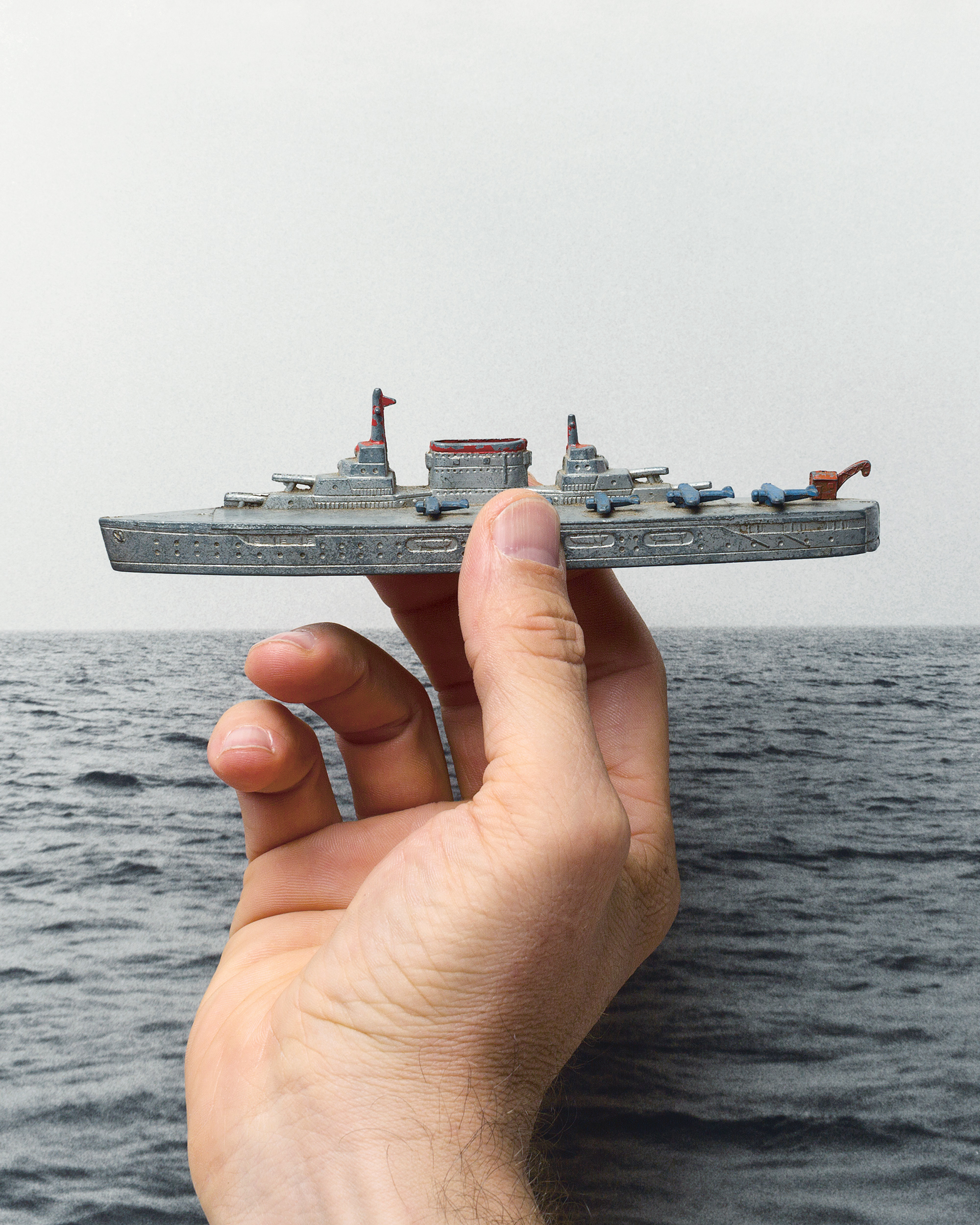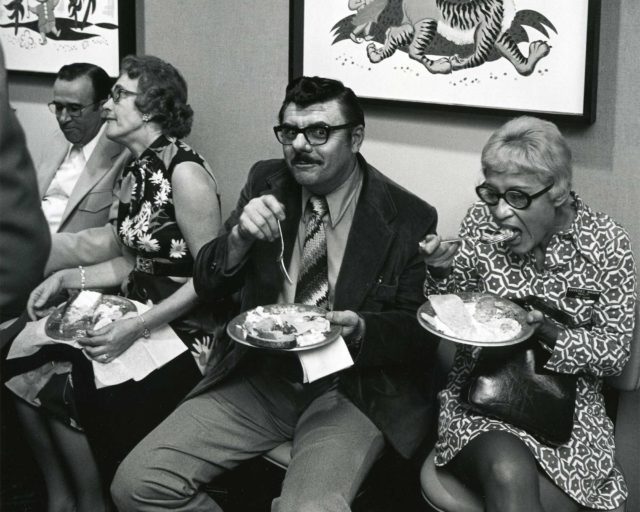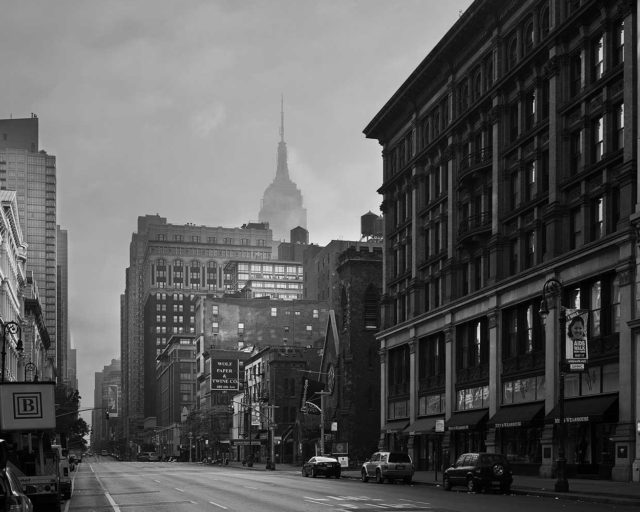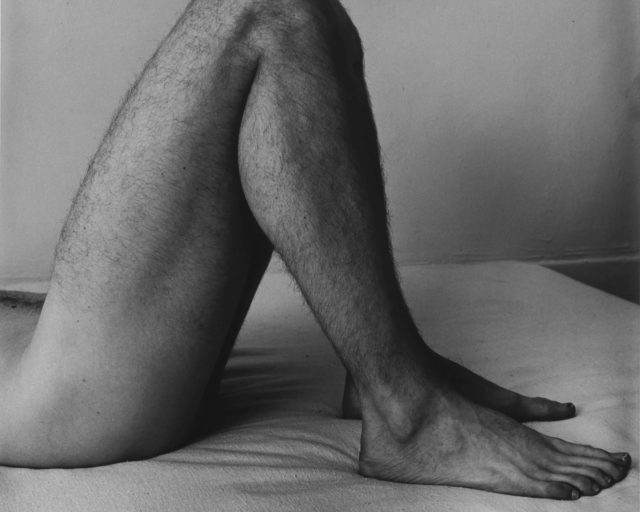Tamara Shopsin & Jason Fulford, Photo-illustration (after Kenneth Josephson), 2014
Of the influential British art critic and novelist John Berger, writer Geoff Dyer deems most striking Berger’s “ability to keep looking, staring at a picture until it yields its secrets.” Dyer’s comment appears during the following exchange with critic Janet Malcolm. Dyer and Malcolm, two distinguished writers on photography, were drawn to the medium for different reasons. Although Malcolm suggests that they may even reside within different rooms in photography’s many mansions, both agree that good writing on images begins with an urge to “keep looking.
Malcolm is a longtime staff writer for the New Yorker and a force in American writing and journalism. She is the author of more than ten books, which include Diana & Nikon: Essays on the Aesthetic of Photography (1980); The Journalist and the Murderer (1990); The Silent Woman: Sylvia Plath and Ted Hughes (1994); Two Lives: Gertrude and Alice (2007); and Iphigenia in Forest Hills: Anatomy of a Murder Trial (2011). Her recent collection Forty-One False Starts: Essays on Artists and Writers (2013) includes, among other pieces, writings on Diane Arbus and Thomas Struth and a brilliant 1986 portrait of Artforum then-editor Ingrid Sischy, and demonstrates that, no matter the subject, Malcolm’s approach is analytical and precise, almost photographically so.
Geoff Dyer is equally catholic in his selection of topics, usually approached in a pleasurably digressive style entirely his own. His book about photography, The Ongoing Moment (2005), is organized around various photographers’ handling of subjects, from blind individuals to hats to benches. Dyer warns his readers in the book’s introduction: “I suspect that this book will be a source of irritation to many people, especially those who know more about photography than I do.” Surely even the most informed readers benefited from his unique approach. Dyer’s other books include Out of Sheer Rage (1997), an achingly funny book about not writing a book about D.H. Lawrence; an essay collection titled Otherwise Known as the Human Condition (2011, winner of a National Book Critics Circle Award for Criticism); Zona (2012), about Andrei Tarkovsky’s film Stalker; and most recently, Another Great Day at Sea: Life Aboard the USS George H.W. Bush (2014).
When Aperture asked Dyer and Malcolm this past summer to correspond about their respective practices as writers who share an abiding interest in photography, the ensuing email exchange took place over a number of weeks, with Dyer corresponding from his temporary residence in Venice, California, and Malcolm from her summer home in rural Massachusetts. The conversation is fittingly interrupted at one point by a summer storm; an impasse is overcome, improbably, by a surprisingly relevant discussion of aircraft carriers. Dyer and Malcolm may not reveal any secrets as to how they both so precisely bring their subjects into sharp focus. Indeed, there may be none to reveal— aside from a preternatural talent for translating close looking into shrewd writing. —The Editors
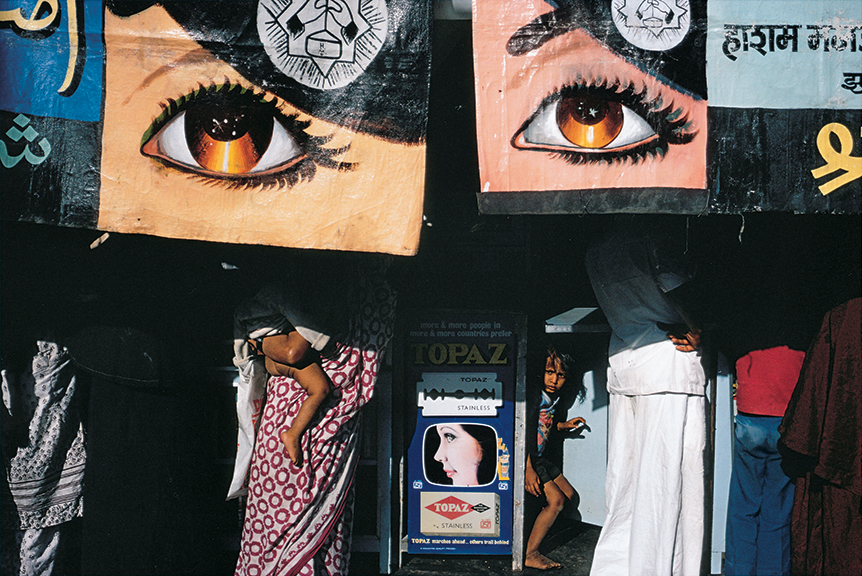
© Alex Webb/Magnum Photos
Geoff Dyer: How did you first become interested in photography? Did this interest precede your writing about it or did the two things occur more or less simultaneously? At the risk of preempting your answer, at what point did an interest in photographs or photographers become an interest in photography?
Janet Malcolm: Like Julia Margaret Cameron, I became interested in photography when a relative gave me a camera. Unlike Mrs. Cameron, I did not become a great photographer, or even a good one. I learned no technique. Most of the pictures I took were either under- or overexposed. Chance dictated that some images emerged clearly. But I loved taking pictures and would take the camera—a Leica M3—on all trips.
I had read that Cartier-Bresson thought of his Leica as an extension of his eye, considering it a great improvement over the large, heavy cameras that were its predecessors. It permitted him to run around Paris having his decisive moments. It has taken me years to realize that (1) traveling with a camera and seeing everything through its eye rather than through one’s own may not be the best way to see the world, and (2) the Leica is not a lightweight object but a heavy, cumbersome thing when compared to the deliciously lightweight point-and-shoot and cellphone cameras of today.
I began writing about photography with the spurious authority of the young. I probably thought that my experience as an amateur photographer was some sort of qualification. Above all, I was inspired by John Szarkowski’s brilliant directorship of the Museum of Modern Art’s photography department and by his book Looking at Pictures. What about you? How did you come to write about photography? What drew you to it?
GD: Almost entirely it was reading about it (rather than actually looking at pictures). The big three: you know, two Bs and an S—Barthes, Berger, and Sontag—and a bit of a third B: Benjamin. I wrote a few small things on photographers for British papers and then I became very interested in photographs of jazz musicians when I was writing But Beautiful in 1989, particularly in the question of whether, or how, to convey sound visually. But I was using the pictures mainly as a source for fiction so was far more concerned with the people in the pictures than I was with the people who took them, something I became interested in only later. (That happened when I realized that a picture of D.H. Lawrence was also a picture by Edward Weston.) I still think jazz is an art form that’s been very well served by photography. Do you know Roy DeCarava’s amazing picture of Ben Webster and John Coltrane?
JM: No, I don’t.
GD: I didn’t know it at the time I was writing But Beautiful but wish I had, especially since DeCarava, in The Sound I Saw, had very consciously explored the question that interested me. Webster is cuddling him—Coltrane!—with such rough tenderness. There it is: tradition in jazz condensed into a single picture. I still love it—it’s so intimate and telling—even though DeCarava turned out to be impossible about having his pictures reproduced in The Ongoing Moment. That’s a subject—the right to reproduce images—I’m sure we’ll want to come back to. Anyway, my knowledge of photography was still very scanty in the early 1990s. I remember going to dinner at John Berger’s place in the Paris suburbs in 1991. Cartier- Bresson was there. The name rang some kind of bell but I wasn’t sure if he was a film director or a maker of watches. In 1997 I was invited to the Center for Documentary Studies in Durham, North Carolina, to help work on a book of photographs by William Gedney that Margaret Sartor was putting together. That’s when I became aware of how incredibly ignorant I was about the history of photography and began to study it in a far more thorough way. Perhaps appropriately that’s when and where I first read your book Diana & Nikon. I only read Szarkowski much later, by which time I had a sense of what a huge figure he was. I read and reviewed his Atget book—the one with a picture on one page and a few paragraphs of text on the facing page—which I think is one of the great books about photography and a beautiful work of art. (Incidentally, I hope I won’t go to my grave without having done a similar kind of book—picture on verso page, text on recto or vice versa—myself.) He saw the review and sent me a signed copy of his book Mr. Bristol’s Barn. Obviously that’s something I treasure. Anyway, going back to what I said at the beginning, I’d be very interested to hear what Berger, Barthes, and Sontag—each of them— meant to you.
JM: I had to smile when I read your reply to my question. Aperture could not have brought together two people who are more apart in their relationship to photography than we are. Berger’s, Barthes’s, and Sontag’s writings on photography have meant almost nothing to me. I struggled and failed to grasp Barthes’s and Berger’s thought, and while I could understand Sontag’s, with a few exceptions (the Leni Riefenstahl piece, for example), I found her interests remote from mine.
The house of photography has many mansions, and you and I live in different parts of the building. You are on a high floor with a large view while I am in the garden apartment. The first publisher of Diana & Nikon gave the collection the rather clumsy subtitle “Essays on the Aesthetic of Photography.” But what he had in mind was to distinguish my approach from Sontag’s. These are conceptual writers, while I am—I don’t know—someone who is better equipped to look at pictures than to think about what photography is.
So what are we going to talk about—aircraft carriers perhaps? I read your piece in the New Yorker about your experiences aboard one of those amazing vessels with the most enormous pleasure and admiration. I have been interested in aircraft carriers ever since I read a book called We Captured a U-Boat by Rear Admiral Daniel V. Gallery, in which an aircraft carrier called the Guadalcanal subdues a German submarine and tows it 1,700 miles back to America. The submarine is now in a museum in Chicago. Did you read this book in preparation for your project? I’m not sure why, but I think aircraft carriers will help get us over our impasse re: photography.
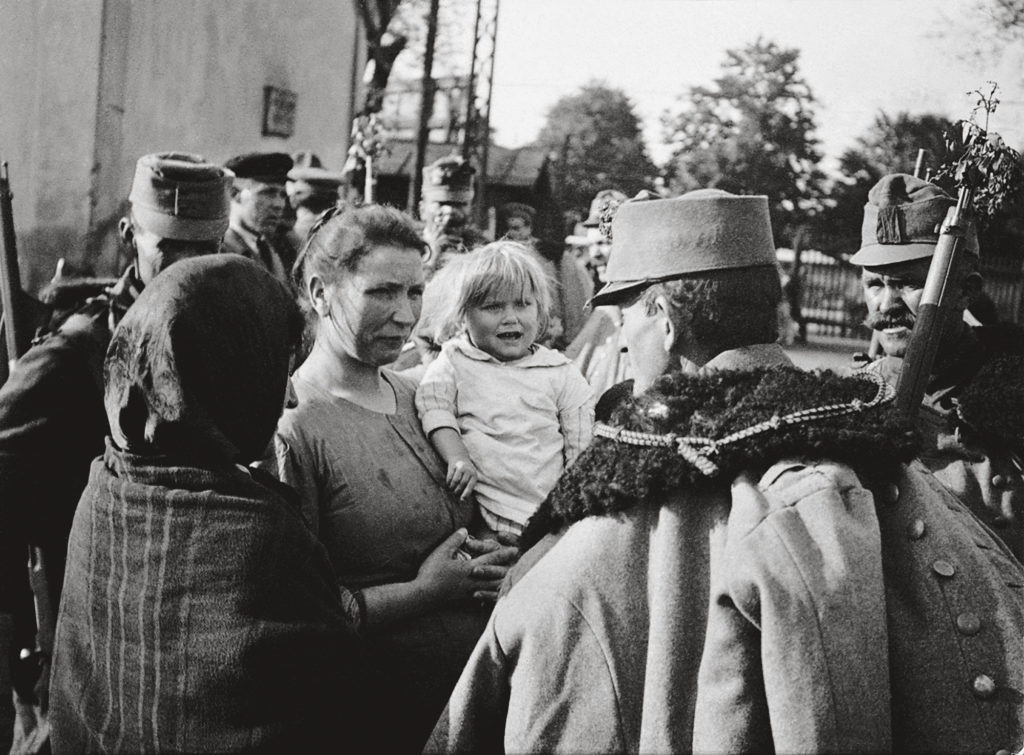
Estate of André Kertész and Higher Pictures, New York
GD: As it happens I was on the carrier with a rather distinguished photographer, Chris Steele Perkins, who was not at all happy, when he was sent proofs of the book, to find himself referred to throughout as “the snapper.” And I’ve just written the introduction for a book of photographs of the U.S. Navy by An-My Lê, many of which were taken during her time aboard a carrier, so, yes, it’s possible that the two subjects—photography and carriers—are not so remote. I haven’t read We Captured a U-Boat, though it sounds exactly like the kind of thing I do like to read. But let’s go back a bit. I’m not convinced that our apartments are quite as far apart as you claim, because The Ongoing Moment is actually made up of a whole lot of quite close readings of individual photographs, something I became interested in through … Berger! I think, for example, of his reading of the Kertész picture of A Red Hussar Leaving Budapest in Another Way of Telling, but there are loads of others. Berger’s most distinctive quality, in my opinion, is his ability to keep looking, staring at a picture until it yields its secrets (which are often also its obviousnesses). There’s an irony in what you say as well. Tod Papageorge, in his book Passing Through Eden, writes, “Garry Winogrand never read Roland Barthes, and found whatever he’d seen of Malcolm’s and Sontag’s original articles about photography in the New Yorker and the New York Review of Books grimly laughable.” But from what you say here it turns out that you were of Winogrand’s party after all! Except, it turns out, Papageorge is not being entirely reliable as a witness: in the catalog to the big SFMOMA show, curator Sarah Greenough points out that Winogrand’s discovery of Sontag’s writing was quite a big thing for him. He recommended her essays—admittedly not the ones directly on photography—to students at Rochester as a way of understanding his own work. I know you wrote about Winogrand briefly in Diana & Nikon but wonder if you are going to write about the Winogrand show now that it’s at the Metropolitan Museum in New York? Frustratingly, I’ve missed it everywhere it’s been so far, in Washington, D.C., by only about two days (but wrote about it anyway—looking very closely at a couple of pictures—in the London Review of Books.). It seems to me, given what you said about the importance for you of Szarkowski, that quite a lot of stuff converges on Winogrand.
JM: Thanks for sending the link to your London Review piece on Winogrand, which gives us a text to engage with. You write that in Winogrand’s late work:
A much smaller number of successful pictures resulted from a larger reservoir of images. And our response remains fundamentally unaltered too: we wanna see ’em anyway! More from the early years, more from the mature period, more from the last years even if much of it’s not worth seeing.
Even if much of it’s not worth seeing! You are indeed smitten. I have to confess that over the years, I have changed my mind about Winogrand’s photographs. I no longer “wanna see ’em.” I find them consistently and uniformly uninteresting. I think I was wrong about them in my book. You write about “the mindblowing amount of information [Winogrand] provided about the social landscape of America in the 1960s and 1970s.” I don’t see this information as anything special, anything you wouldn’t find in any snapshot taken with a point-and-shoot (pointless-and-shoot?) camera.
The enormous, powerfully structured photographs of Thomas Struth and Andreas Gursky give us the valuable information I find lacking in Winogrand, information not available elsewhere. I suppose this kind of information (it would require many pages and much analysis to characterize it) can be found in all the best photographs. August Sander’s portraits have it in spades.
I am in a remote country house in Massachusetts and we are having violent storms here that disrupt Internet access. So I had better send this off while I can, and take up some of the other points in your article when the weather calms down.
*
The sun has come out and the Internet has dried itself off and returned, so I can get back to your Winogrand article and to the “twinned pictures” by Winogrand and Tod Papageorge with which you end it. These pictures are essentially the same picture. You tell us that Winogrand and his disciple Papageorge “were out photographing together.” They evidently came upon the mystifying sight of the couple leaning against a tree kissing, with a woman leaning against the other side of the tree who is dressed like and exactly resembles the woman being kissed. Both photographers took the picture, though we don’t know whether they did so simultaneously or if one took the picture first and the other followed. In either case, the question of authorship comes up. Whose picture is it? Are pictures there for anyone to “take”? Or are they made by the photographer? You discuss the slight differences between the two pictures and conclude that Winogrand’s version is better. But would you agree that there is something complicated going on here that neither of us have put our finger on?

© Jonathan Brand
GD: Well, I was sort of joking about wanting to see the stuff that’s not worth seeing, or at least that was meant to be a jokey way of summing up the Winogrand conundrum. Regarding facts/information, I think Szarkowski put it best when he said Winogrand’s most impressive pictures contained “new knowledge.” And because that knowledge came in a form that was unique to photography—the content was not unique; as you say, we could get it from other sources—it also doubles as new knowledge about photography. For me that knowledge has stayed new in spite of all the changes in hairstyle and lapel widths in the photographs and in photography.
To take up your point about the Winogrand pictures, this is the eternal question about photography, isn’t it: the old who by/what of? Is a photograph defined by what’s in it or by who took it? Well, a bit of both, obviously. And it can never be settled for good: it depends on the picture and the photographer. I often think of the sliding scale of options offered by Wallace Stevens in “An Ordinary Evening in New Haven,” from “simple seeing, without reflection” to “Reality as a thing seen by the mind,/Not that which is but that which is apprehended . . .” As it happens, and at the risk of seeming like a Winogrand nerd, I recently saw a show in Portland, Oregon, of pictures by Winogrand and Jonathan Brand. They often photographed together and Brand took lots of pictures of Winogrand on the phone. Apparently he checked his answering service obsessively. So Brand, to me, has provided a great bit of new knowledge about Winogrand. The world is out there and some photographers transform it more thoroughly than others. In the process of recording the world, Alex Webb—who despite his considerable reputation, I think is actually underrated—reconfigures the world in a way that is consistently jaw-dropping: “Everything as unreal as real can be,” to continue the Stevens theme.
Moving on, I’d like to ask if, as a writer, you’ve approached photography differently than other subjects you’ve covered? Does anything about the medium of photography seem not exactly to insist but to encourage that?
JM: Since we are conducting this exchange in a journal of photography, I wish I could agree that photography has some special, mysterious, maybe even mystical quality that causes writers to write differently about it than about other subjects. But I’m afraid that I have never felt the force of this quality. For me the task of writing about photography is the same as the task of writing about anything else. Your question suggests that your experience is different—that your writing on photography is inflected by the medium itself. Would you talk about this experience?
GD: I think the difference might be between writing essays or pieces that are then collected into a book with something conceived at the outset as a book. With books I’ve always felt a compulsion to try to make the form of what I was writing share some of the qualities of the thing I was writing about (something one can’t do so readily in pieces for publications which have their own formal requirements and imposed limitations). So, for example, the book on jazz, But Beautiful, is a series of improvisations. But that form and style would not be appropriate to photography. The form of The Ongoing Moment takes on some of the experiences of looking at photographs—rummaging in a drawer or box of pictures with all the adjacencies and echoes that that throws up. So it’s not that there’s anything especially special about photography, as it were: nothing more special about it than jazz or anything else, but something distinctive, certainly, which I have tried to bring out in words. That might be why musicians have tended to like the jazz book and photographers the photography book even though I was in some ways ill-equipped to write either since I neither play an instrument nor take pictures.
Let’s go back now to that question of the right to reproduce photographs in critical discussions of them. You are merciless, in your recent collection of profiles on artists, Forty-One False Starts, about Doon Arbus and her claim that she wanted to protect her mum’s pictures from interpretation. I had to send the relevant bits from The Ongoing Moment to the Arbus people in order for them to consider whether they would grant permission to reproduce pictures in the book (which was already a retreat from my principled position that I wasn’t going to let anyone I’d written about see what I’d written, but, well, I knew the book would be better with the pictures). They wrote back saying that they couldn’t grant permission because of the factual errors in the book. I started to write back immediately thanking them, was about to ask them which facts these were so that I could correct them. . . . Then I paused and realized, um, there were no facts—except Arbus’s birthday and I’d got that right. There were just my thoughts about the pictures. So the words appeared in the book unchanged, without the pictures. (Incidentally, I’ve gotten to know Doon a bit since then and have come to like her, as I always like anyone with a sense of humor.) There were two other major problems with permissions: I mentioned DeCarava earlier; the other was Robert Frank or at least his gallery. At one point, after numerous delays and much pleading from me, this person wrote to tell me that Mr. Frank was having surgery on his knees and so . . . etc., etc. I wrote back that I was going to need surgery on my knees if I had to keep crawling on them like this. But the general point or question is this: don’t you think there should be the same freedom to reproduce pictures in the context of commentary about them that there is in using quotes in literary criticism? So that, say, if you wanted to write something about what a crock of shit The Ongoing Moment was, you could quote bits to support your argument and I’d—rightly—be powerless to stop you.
JM: I couldn’t agree with you more—that the “fair use” doctrine should apply to photography criticism no less than it does to literary criticism. Of course, photography critics should be able to “quote” the same way literary critics do. When I was preparing Diana & Nikon for publication, I experienced the same shock and disbelief you did when you were refused illustrations for The Ongoing Moment. There were three photographers who refused permission to reproduce any of their photographs. One of them, Chauncey Hare, was particularly adamant. He wrote a letter to the publisher saying he would never allow a picture of his to appear in a book written by an effete East Coast writer like me. That I had highly praised his pictures cut no ice.
An argument that the Doon Arbuses and Chauncey Hares might put forward is that literary critics quote excerpts while photography critics reproduce (perforce) whole pictures. I’m not sure I know how to answer that—except, perhaps, by citing the tradition in art criticism and art historical writing whereby whole pictures are reproduced as a matter of course.
I love your line about needing knee surgery yourself. And I admire your forbearance toward Doon Arbus after all the trouble she caused you. Your comment about new knowledge coming from the form of Winogrand’s best pictures has given me something to think about. It almost makes me want to see the Winogrand show at the Metropolitan Museum.
GD: Not to see it would be an act of lunacy!
JM: Then I had better go see it. In turn, I hope you will have a chance to read We Captured a U Boat. There is an incredible moment in it on a moonless night when the commander has to decide whether to turn on the lights of his aircraft carrier so that a group of returning airplanes can land on it—thus risking the lives of everyone on board because of patrolling packs of German submarines—or to maintain the blackout and doom the pilots of the airplanes. Talk about decisive and ongoing moments!
This conversation originally appeared in Aperture, issue #217, “Lit,” Winter 2014.










